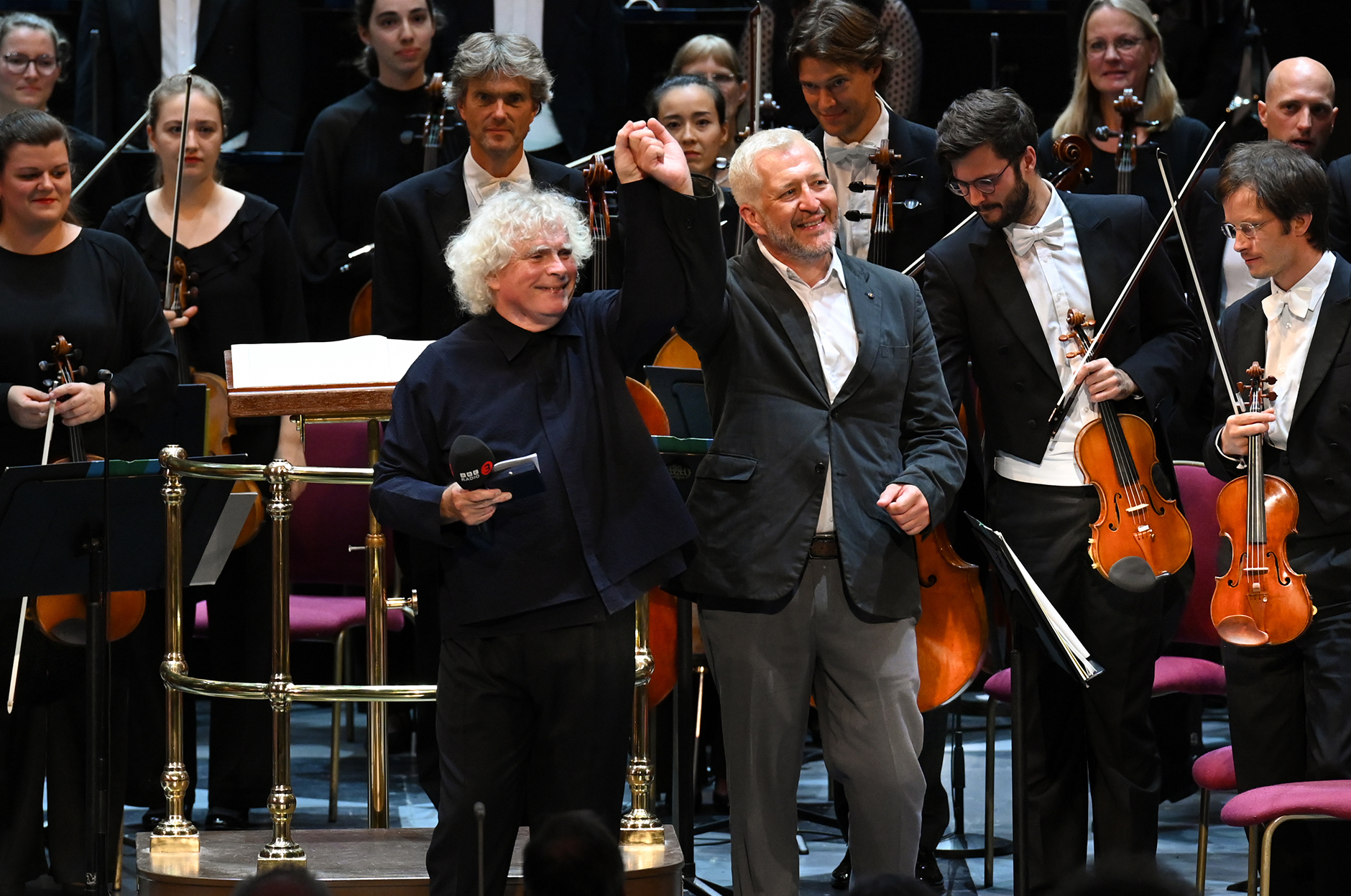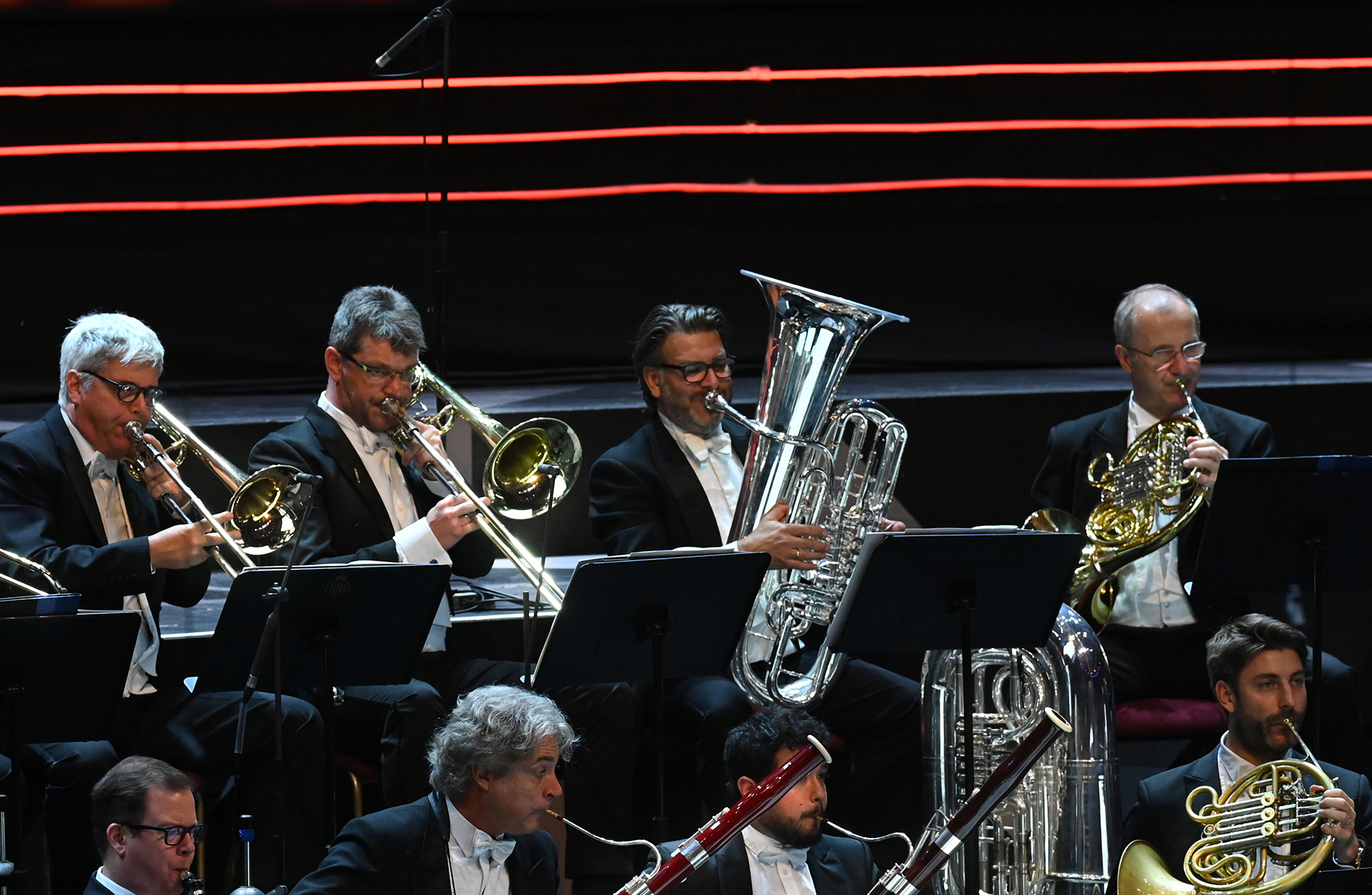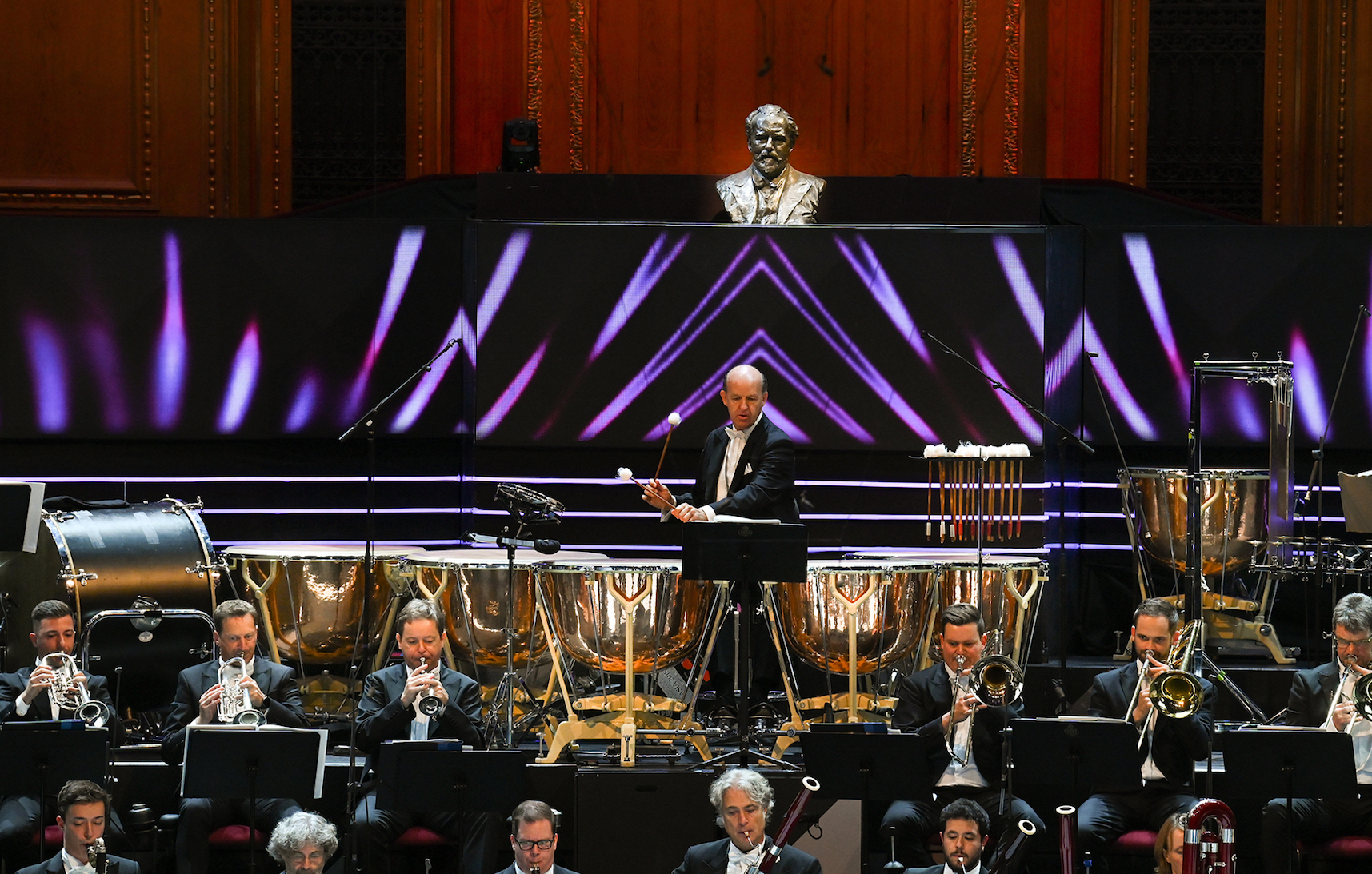Hot on the glittering heels of the Berlin Philharmonic and Kirill Petrenko, Sir Simon Rattle brought another stellar German outfit to the Proms, bearing the gift of a Bruckner symphony in the composer’s 200th birthday year. With his (relatively) new team at the Bavarian Radio Symphony Orchestra, Rattle served a polished, sophisticated and superbly played Fourth.
This was not quite the mystical and monumental Bruckner that hard-core devotees may crave. Still, its wonderfully blended and balanced sound did prove that Rattle’s BRSO now can compete with its starry counterparts in depth and finesse – and that even sceptical civilians can be coaxed to enjoy the great Austrian oddball’s eccentric and visionary musical journeys.
Before the Bruckner, we heard Thomas Adès’s new Aquifer: a work written for Rattle and the BRSO. Almost a tone-poem, it takes the notion of an underground river running through permeable rock to generate a sort of geological movement through dense strata of orchestral sound They culminate in a surprisingly affirmative, major-key, burst or spout of melody. Although subterranean channels lend the piece its primary metaphor, it often recalls a 21st-century take on the “sea pictures” beloved of fin-de-siècle composers, with surging, eddying strings, glistening brass, and tuneful woodwind glints that dance above the chromatic swell below. Glissando passages accentuated the sense of ever-changing flux. Rattle deftly steered his craft through quiet but restless sections of ripple and swirl. Thrust from these Kubla Khan-like “caverns measureless to man”, the horns gush into sunlight at the close of this impressively designed exercise in orchestral colourism. Having demonstrated what Adès can achieve, Rattle then presented the composer onstage with the gold medal of the Royal Philharmonic Society (pictured above): an honour he shares with, among others, Brahms (not so relevant to Aquifer perhaps) and Sibelius – who definitely is.
Rattle deftly steered his craft through quiet but restless sections of ripple and swirl. Thrust from these Kubla Khan-like “caverns measureless to man”, the horns gush into sunlight at the close of this impressively designed exercise in orchestral colourism. Having demonstrated what Adès can achieve, Rattle then presented the composer onstage with the gold medal of the Royal Philharmonic Society (pictured above): an honour he shares with, among others, Brahms (not so relevant to Aquifer perhaps) and Sibelius – who definitely is.
Aquifer had accustomed our ears to music that does not so much develop as mutate in iterative, incremental stages. Bruckner does that too, even if the comparatively sunny and straightforward Fourth gives a warmer handshake to its harmonic predecessors – Schubert above all – than some of his other blockbusters. From the variant versions of the "Romantic", Rattle chose Benjamin-Gunnar Cohrs’s edition of the 1878-1881 revision, with a cut in the finale that slims down its sprawling, unwieldy shape. Allied to brisk tempi, especially in first movement (“nicht zu schnell”, but not sluggish either), light and crisp textures, and an avoidance of excess melodrama, it all made for a swinging, jaunty – even elegant – trip through the medieval storybook landscapes that gave Bruckner his initial inspiration. Above all, the Bavarians got their chance to shine, individually and collectively, without any bullying swagger from the podium. The strings, with Anton Barakhovsky as concert-master, had a gratifying warmth and depth if not quite the bone-deep bite of other legendary ensembles. As for the brass (pictured above), so decisive from the first solo horn calls (Carsten Carey Duffin) to the galloping hunt of a properly thrilling scherzo, they had a fabulously rounded, glossy tone – but none of the musclebound harshness that pushes colleagues out of the frame. Rattle, on this occasion undemonstrative and modest in his gestures, spread a lyrical glow over the opening movement that found expression in lovely softness as much as blaring tutti.
Above all, the Bavarians got their chance to shine, individually and collectively, without any bullying swagger from the podium. The strings, with Anton Barakhovsky as concert-master, had a gratifying warmth and depth if not quite the bone-deep bite of other legendary ensembles. As for the brass (pictured above), so decisive from the first solo horn calls (Carsten Carey Duffin) to the galloping hunt of a properly thrilling scherzo, they had a fabulously rounded, glossy tone – but none of the musclebound harshness that pushes colleagues out of the frame. Rattle, on this occasion undemonstrative and modest in his gestures, spread a lyrical glow over the opening movement that found expression in lovely softness as much as blaring tutti.
We heard throughout a spacious, relaxed but rhythmically taut and never bogged-down Bruckner, rather than the strenuous and mysterious pilgrim that many of his advocates admire. The quasi-religious procession of the andante perhaps wound down towards immobility once or twice, but there were always fine points of instrumental colour – whether from Henrik Wiese’s flute, Stefan Schilli’s oboe, or the sumptuous violas – to enjoy. And the hunting scherzo, with those smoothly commanding brass to the fore, felt lithe and agile, not an artillery assault. There was nothing, in any sense, overblown about this performance. Rattle engineered some telling dynamic shifts but they never sounded extreme or pulled off simply for a short-term high. In the finale, that mode of well-articulated fluidity almost managed to overcome the episodic jerkiness that can make this movement a tough act to control. With the serenely enveloping strings as his bedrock, Rattle built carefully, compellingly, but without any sense of the juddering bombast pursued by some Brucknerians. Typically, Raymond Curfs’s timpani (pictured above) made its presence felt as much – or even more – in piano passages as forte detonations. Overall, perhaps this reading lacked a little in unearthly holy fire, although the concluding E flat major resolution, when it finally came, blazed like a noonday sun. That climax finished an interpretation rich in loose-limbed fluency and free of pomposity, or hysteria, anchored by a beautifully integrated sound. For all-round, unshowy excellence, Rattle’s Bavarians on this form yield little to any rivals further north.
In the finale, that mode of well-articulated fluidity almost managed to overcome the episodic jerkiness that can make this movement a tough act to control. With the serenely enveloping strings as his bedrock, Rattle built carefully, compellingly, but without any sense of the juddering bombast pursued by some Brucknerians. Typically, Raymond Curfs’s timpani (pictured above) made its presence felt as much – or even more – in piano passages as forte detonations. Overall, perhaps this reading lacked a little in unearthly holy fire, although the concluding E flat major resolution, when it finally came, blazed like a noonday sun. That climax finished an interpretation rich in loose-limbed fluency and free of pomposity, or hysteria, anchored by a beautifully integrated sound. For all-round, unshowy excellence, Rattle’s Bavarians on this form yield little to any rivals further north.














Add comment